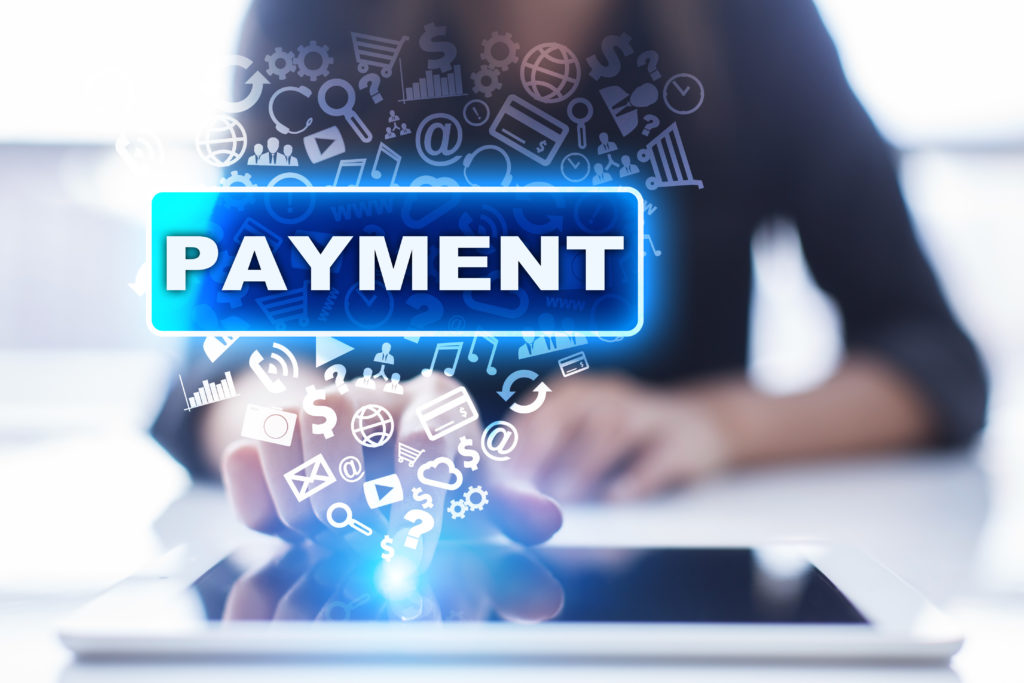Whether you’re a small business owner or a big box retailer, how you choose to manage your payments is a major decision. Your ability to offer customers a positive, seamless, convenient payment experience is key to making sales and completing transactions.
That’s where a reliable payment suite comes in. It allows you to accept all of your customers’ preferred payment methods, streamline your business operations with payment integration, and offer superior customer service. Below, we offer an explanation of what a payment suite is, why you need one, and how it works.
What Is a Payment Suite?
A payment suite, also called a payment hub, is what allows your business to accept and process payments. Among other things, a modern payment suite such as Nayax’s offering includes:
- The ability to process all forms of cashless payments
- API-based global localized cashless acceptance
- A certified payment facilitator
Below, we’ll explain exactly what each facet of a payment suite is and how it works.
Why You Need a Payment Suite
Cashless Payments and Cashless Society
The use of cashless payments for both merchants and buyers has been growing due to its convenience and security, bringing us toward a cashless society in which all financial transactions are conducted with exclusively digital payments. In fact, studies show that there is clear progress toward a cashless world, with cash being used for only 17% of all payments in 2020, down from 45% in 2015.
Though the world of digitalized and mobile payments is fairly new, the truth is that we’ve been heading in the direction of cashless payments for a long time, with credit and debit cards having become a mainstay in society. Before they came along, checks had already been in use for centuries. Money orders, certified teller checks, and electronic fund transfers are all other forms of cashless payment that we’ve been using for decades.
With the rise of the internet and the surge in eCommerce transactions and integrated points of sale, cashless payments have only become more convenient and popular. Digital payment services like PayPal, cryptocurrency, Apple Pay, Zelle, and Payoneer, and digital engagement solutions offer increased motivation for people to abandon cash use. This, combined with the Coronavirus-instigated fear of catching viruses from touching cash and a worldwide coin shortage, has brought us even further towards a cashless society.
In order to be prepared for a cashless world, a payment suite capable of accepting multiple types of cashless payments (and currencies!) is crucial.
Multi-Method Payment Acceptance
Changes in consumer behavior have not only brought on a shift toward cashless payments, but also toward personalization. Customers now expect to be able to pay with whichever method they want, whenever and wherever they want. Customers who do not see their preferred payment method with which they feel safe and comfortable are likely to abandon the transaction. By offering customers multiple payment options, you will be able to:
- Increase your market share
- Retain customers who prefer to use emerging technology
- Attract new clientele who prefer the additional benefits of various purchasing methods
- Offer quicker check-out processing, making lines shorter and satisfying busy customers
- Process payments more securely
- Convert more transactions
- Appear to be a more reliable merchant by advertising that you offer different payment options
- Provide convenience for customers, increasing engagement rate
Along with accepting multiple payment methods, it is also important to accept multiple currencies.
Multi-Currency Payment Acceptance
In an increasingly globalized business landscape, the ability to reach customers across borders is key to driving sales and gaining a competitive advantage. Offering multiple payment options can improve sales and conversion rates, especially if you research which payment options and currencies your target customers prefer. Ideally, you’ll be able to both make sales in foreign markets and accept payment in customers’ home currencies.
The best payment suite with multi-currency payment processing for you will offer:
- Support for your business location
- Support for all of your desired currencies
- The ability to deposit funds into your account in your desired currency
- Reasonable multi-currency merchant account fees
- Multi-language checkout
- The ability to display prices in local currencies
- International payment fraud risk mitigation
Now that we know why it’s important for your business to have a payment suite, let’s see how it works.
How Payment Suites Work
API-Based Cashless Payments and Acceptance
Many cashless payments are run off of APIs, or Application Programming Interfaces. APIs are essentially a type of written instruction enabling two devices, applications, or databases to connect and share information. Payment APIs integrate with existing digital processes to connect a checkout system to a payment network.
Payment APIs typically work through the following steps:
- An application transmits a message or request to the API
- The API relays the message to the payment processing network
- The payment processing network processes the request and responds to the API
- The API relays the response to the application
While all of this is rather technical, what’s most important to understand is the advantages of API-based payments. Not only do they streamline the payment process for both customer and merchant, but they also offer great opportunities for innovation by giving developers the tools to customize the API in order to come up with new use cases and integrations. Payment APIs also allow merchants to use their own branding and craft their own user experience.
Ask us about our payment solutions
Payment Facilitator
Historically, merchants who wanted to accept credit and debit card transactions had to set up a bank account with a merchant services provider. This could be time-consuming, complex, and make the process of getting up and running as a business lengthy.
Today, however, there is a more convenient option – payment facilitators (PayFacs). Payment facilitators are companies that allow their customers, called sub merchants, to accept digital payments using their own master merchant account. This streamlines the process of accepting payments and allows businesses to get started faster.
Using a payment facilitator offers a number of benefits to merchants, including:
- A smoother and faster onboarding and underwriting process
- Less revenue lost to acquiring banks
- Enhanced customer experience
- Being able to offer more payment methods such as EMV, contactless payments, mobile payments, and NFC payments
- Being able to accept all major card networks and types with one interface and fee structure
- Seamless payment integration solutions
Financial Institutions & Bank Fees
A standard merchant account with a bank used for accepting electronic payments will come with a variety of fees, including per-transaction costs, card processing fees, and monthly and annual bank fees.
The basic electronic payment transaction process includes the following steps:
- The business sends card communications through an electronic terminal to the merchant acquiring bank
- The merchant acquiring bank contacts the card processor who contacts the card issuer
- The card issuer authenticates the transaction
- The approval is sent to the merchant acquiring bank through the network processor
- The merchant acquiring bank authorizes the transaction
- The funds are settled in the merchant’s account.
Different parts of this process incur various fees. The merchant acquiring bank and the network processor charge the merchant a per-transaction fee usually ranging from 0.5% to 5% of the transaction plus $0.20 to $0.30 per transaction. Merchant acquiring banks also charge merchants monthly fees to cover electronic payment risks and for the service of settling transaction funds, as well as special situation fees sometimes.
As you can imagine, all of this can add up to a significant sum of money. But a payment suite provider such as Nayax can act as a financial institution, allowing you to remove the middleman and saving you significantly on bank fees.
What Is Included in a Payment Suite?
Multiple Payment Gateways
To meet customer expectations, it’s important to choose a payment suite that offers multiple payment gateways. A payment gateway is a platform that allows merchants to accept and authorize payments, securely transferring money from the consumer bank account to the seller. Offering multiple payment gateways means that you offer your customer the option to choose between multiple payment options. It has a variety of benefits, including:
- Improved checkout experience
- Increasing the consumer’s trust in the merchant
- Improving the chances of successful transactions
- Avoiding payment processing failures
- Improving international sales
To help you understand which payment gateways are most important, Worldpay’s Global Payments Report found that the preferred payment methods internationally are eWallets (36%), credit cards (23%), and debit cards (12%).
Payment Digitalization
In the same way that digitalization makes things like inventory and employee time tracking more convenient, it does the same with payment. Payment digitalization allows you to send or receive payments in a digital format. This can be done through a variety of modes including wire, UPI, NEFT, AEPS, mobile wallets, and PoS terminals.
Digital payments work by seamlessly running multiple processes in succession, including:
- Checking the payer’s bank account balance
- Verifying card PINs
- Authorizing payments
- Checking available credit limits
- Sending requests to payment gateways
- Debiting the payer’s account
- Crediting the merchant’s account
- Rejecting payments if there are insufficient funds or incorrect payment details
There are several benefits of digital payments.. They allow you to make the buying process easier and more efficient, helping you to sell more goods and services and offer a better customer experience. They also allow you to get paid faster, improving your cash flow and increasing your working capital. By eliminating paper and cash processing and manual data entry, they make your business more efficient and simplify operations and tax compliance. And, often, they’re much more secure, lowering the risk of theft and fraud.
Credit Card Processing
Credit cards are a widespread form of cashless payment that people are used to and comfortable with, making them a key part of any payment suite. Credit card processing involves several credit card processing companies and parties, including the cardholder, issuing banks, acquiring banks, and the merchant services provider. Each of them handles a critical step in the chain of events that allows payment, including:
- Authorization – The merchant sends the transaction to the acquiring bank, which sends it to the issuing bank for authorization. This includes checking for sufficient funds and determining if the transaction is safe.
- Batching – The money from the transaction is sent to the acquirer to begin the process of depositing it into the merchant’s account
- Funding – The business gets the money deposited into their account
Any modern payment suite should be able to accept credit and debit cards with both contactless and contact-based payments.
EMV and Secure Payments
The modern standard for maintaining security with credit and debit card payments is called EMV, which is short for Europay, MasterCard, and Visa, the three companies that created the standard in the 1990s. Today, EMV payments are considered crucial to protecting consumers and businesses from fraudulent transactions.
EMV cards are embedded with a chip containing an encrypted digital signature that the card reader uses to validate the transaction. All EMV cards must use a form of encryption to prevent data theft. There are three different authentication methods card issuers can choose to use on their EMB cards: Dynamic Data Authentication (DDA), Static Data Authentication (SDA), and Combined Dynamic Data Authentication (CDA). EMV chips can be used both for contactless and swipe/insert payments.
EMV payments are much more secure than magnetic stripe transactions, which criminals can clone to a fake card for fraudulent spending. This is why today, more than 88% of all card transactions worldwide use EMV chip technology, making an EMV-capable point of sale service an important part of any payment suite.
Ask us about our payment solutions
Mobile Payments and NFC
An emerging payment option preferred for its speed, security, and convenience is NFC payments. NFC stands for near-field communication and can be used with mobile wallets or NFC-enabled credit and debit cards, both of which are becoming more commonplace.
NFC technology works by connecting two NFC-enabled devices in close proximity to one another to transmit payment information. It uses two-way encryption to provide a higher level of security than swiping or inserting a debit card.
Card information is first encrypted when sent to the payment terminal, requiring authorization with face ID, fingerprints, or passcodes. The transaction information is then relayed to the NFC terminal with a randomly generated one-time-use code sent to the merchant. Because this code is one-time use only, it cannot be used for hacking. This combination of safety features makes NFC payments difficult to compromise and ensures they do not happen accidentally.
In addition to higher security, this contactless payment option also offers the benefits of being more sanitary and providing greater speed and convenience. This is why mobile payments are forecasted to grow by 26.63% in the years 2020–2025, overtaking cash and card payments. By offering NFC payments, merchants show their customers that they are up-to-date on the latest technology and value their customer’s privacy and security.
Mobile Wallets
The rise of mobile wallet usage can be considered one of the factors driving the popularity of NFC payments. A mobile wallet, such as Google Pay, Apple Pay, and Monyx Wallet, it is a virtual wallet accessible from a mobile app that stores information such as credit card numbers, debit card numbers, coupons, and loyalty card information.
Customers favor mobile wallets over cash and credit cards for their high convenience factor. Instead of having to carry around a physical wallet, mobile wallet customers can simply pay with their phones, not having to carry their wallets around as well.
Mobile wallets use NFC technology (see above) for security, offering users peace of mind that their sensitive data is safe.
There are three types of mobile wallets.
- Open – An open mobile wallet such as PayPal allows customers to use their mobile wallet funds to make payments at any place that accepts the mobile wallet
- Closed – Closed mobile wallets such as Amazon Pay or Monyx Wallet can only be used to make payments for transactions initiated by a specific merchant
- Semi-closed – Semi-closed open wallets allow users to use their funds for transactions with multiple merchants as long as there is a contract between the merchant and the mobile wallet company
Payment suites integrated with popular mobile wallets enable businesses to build customer loyalty and create an improved buying experience. This integration also allows business owners to create marketing campaigns, provide punch cards, refunds, top-up bonuses on prepaid cards, make discounts available for users, and more. These tools and incentives enhance customer loyalty, bringing payments and loyalty under one roof and helping business owners grow their revenue.
Online Payment Solutions
Retail e-commerce sales are capturing a growing fraction of the market, with roughly one in every five dollars spent in the United States coming from digital orders in both 2020 and 2021. As such, online payment solutions and payment gateways allowing virtual merchants to receive and make payments have become an important part of any payment suite.
Online payment solutions allow businesses to accept a wide range of payments on their websites, ensuring a secure transaction to protect both financial and identifying information. They create systems and policies to offer a large number of protections including cardholder data, passwords, inventory, and more.
Online payment system transactions work by going through the following steps:
- The customer chooses items for purchase and enters their payment details
- Card information is sent to the payment gateway and then the payment processor
- The payment processor transfers the transaction details to the credit card network for verification
- Once verified, the card network requests authorization from the customer’s bank to release funds
- If funds are found available and the transaction non-fraudulent, the bank submits notice that the transaction has been approved
- The approval is passed to the payment processor, which requests funds from the bank and transfers them to the merchant account
- After a few days, the payment processor makes the funds available to the business’s bank account
This process makes receiving payments online easier than ever and also allows companies looking to provide payment solutions to personalize their offerings to their customers.
Personalization: Any Device
The modern consumer likes it when you tailor to their needs: 80% of consumers are more likely to buy from a company that provides a personalized experience and 66% expect brands to understand their individual needs. Being able to use data to offer personalized payment options according to a shopper’s previous behavior and location can be the difference between making and losing a sale.
While it is still an emerging field with room to grow in digital payment personalization currently involves:
- Payment plans
- Product recommendations
- Dynamic product bundles
- Coupons
- Category pages
- Digital receipts
These tools allow you to boost your customer engagement and retention.
Choosing the Right Payment Suite For You
A modern business aiming to offer an optimized customer experience requires a comprehensive solution for payment and business management. Nayax offers a complete suite of payment options to allow your business to go fully cashless, stay up to date with market trends, and accept all forms of payment. This way, you’re able to meet your customer’s needs while cutting down on fees and remaining competitive in a world fast moving toward cashlessness.
Learn more about Nayax’s payment solutions. Contact us today.






